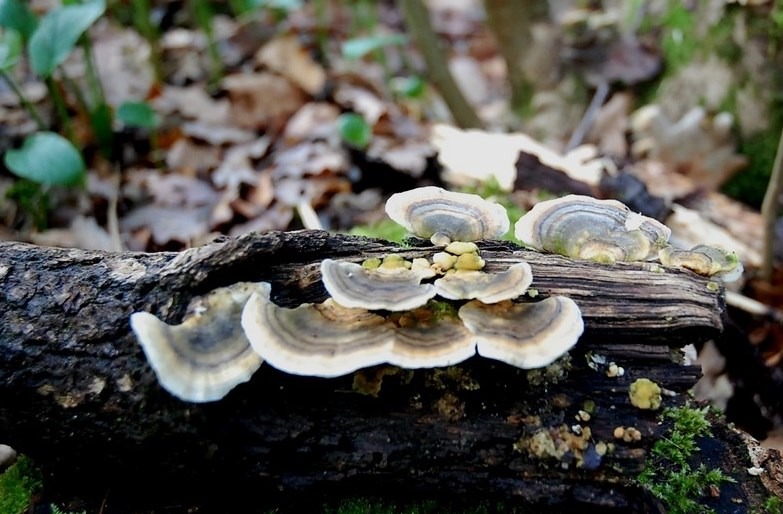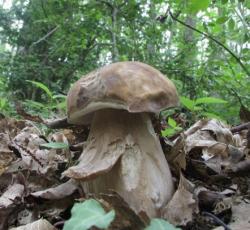The Coriolus versicolor (or Trametes versicolor) is a mushroom that grows all year round.
It has a typical fan shape and characteristic, colourful streaks all over its body. It is also known as Trametes versicolor or even Turkey Tail Mushroom because his tail shape is similar to those of a wild turkey bird.
Indice
Introduction to Trametes versicolor
The turkey tail mushroom is a fungus of the class Basidiomycetes and belongs to the family of the Polyporaceae.
The Trametes versicolor is a very common species throughout the European continent but also in the rest of the world.
It often grows on dead tree trunks and on wood stumps intended for the reproduction and cultivation of Agrocybe Aegerita mushrooms and is very resistant over time and even to low temperatures.
Initially, it acts as a parasite, attaching itself to the now weakened host plant, then, after the death of the host tree, as a saprophyte.
The saprophyte function of this mushroom is very important because it decomposes the wood and restores all the nutrients and mineral salts it contains to the soil.
This characteristic and common mushroom, with its corbel shape and multicoloured carpophore, is known for the variability of its colour.
Characteristic, this of the various colors, from which it takes the name of “versicolor“.
Although not edible for humans, this parasitic fungus is of considerable interest to the scientific community.
It seems to have anti-cancer properties and is currently used in mycotherapy for cats and dogs with tumors, lymphomas or viral diseases.
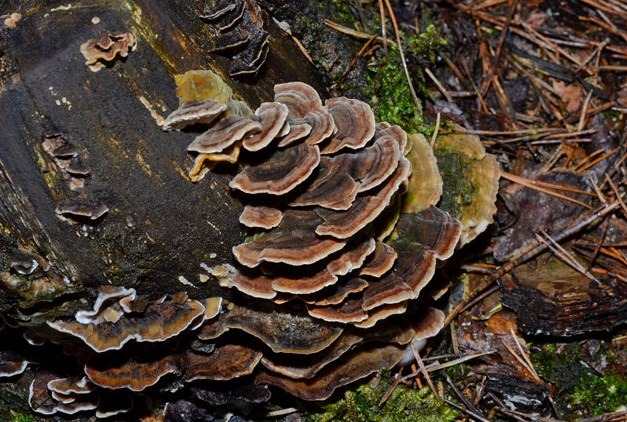
Description:
The body of the Coriolus versicolor is usually shaped like large boxes or overlapping shelves.
The body is thin, elastic and leathery.
The shape is fan-shaped with a slightly wavy edge.
Along the entire surface of the body there are numerous concentric streaks.Some are velvety and opaque, others are smooth and shiny.
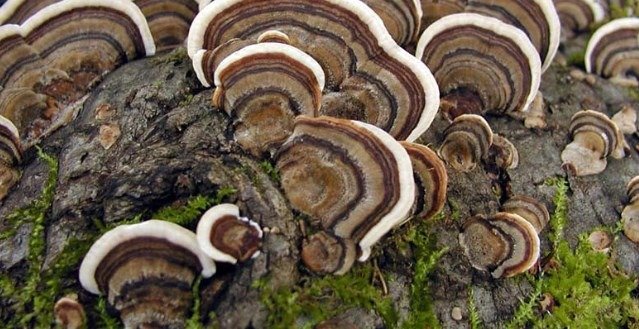
Cap of the Trametes versicolor
The colour of the cap of the Coriolus versicolor or Trametes versicolor is very variable.
You can find versicolor mushrooms with a cap with streaks from black to greenish, with blue shades, but also on dark brown or red.
The bottom of the hat is different. It is formed by small and short tubules of whitish colours with very small pores.
The surface is no longer velvety, but porous and slightly ochre in colour, resembling a rigid sponge. This is the fertile part.
Pores of Trametes versicolor
From the pores of this “sponge”, the spores that will be dispersed in the surrounding environment.
At the beginning they are very small, circular and white and then later they become yellow or brown (there are 4-5 per square millimetre).
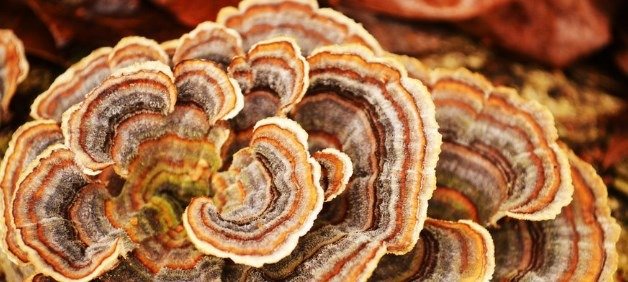
Spores of Trametes versicolor
The spores are cylindrical or just arched, of ochre-cream colour in mass, smooth, with evident apex. The dimensions are 6,5-8,5 x 1,5-2,5 µ.
Flesh of Trametes versicolor
The meat is thin and leathery, has a typically “fungal” smell, pleasant and with a fairly good taste and sweetish.
Habitat of Coriolus versicolor
The fungus Coriolus or Trametes versicolor develops above the dead wood of the trees, but also on plants still lives and grows.
The stages of versicolor prefer broadleaf trees, which he decorates with his delicate and imaginative natural sculptures.
Oaks, beeches, elms and chestnuts are the preferred species, more rarely conifers.
You can also meet him in very strange places, such as the wooden sleepers of the railway.
Grows all year round, from the sea to the mountains, even in the city.
Similar species to Coriolus versicolor
It can be confused with the Bjerkandera adusta, with which it shares its habitat, or with Pseudotrametes gibbosa.
Medicinal properties of Coriolus versicolor
Nonostante sia un fungo legnoso e praticamente non commestibile anche se non tossico, ha numerose proprietà medicinali e curative.
Nevertheless it is a woody and practically inedible fungus even if not toxic, it has numerous medical and curative properties.
It has a high energy value.
Contains plant fibers that improve digestion, is rich in vitamins B6 and B12 that have beneficial effects on brain cells and the nervous system.
It also has a high immunostimulating value, it is antibiotic and antiviral natural.
It is useful in winter conditions as a prevention of diseases caused by viruses and in many other and various applications.
Since 1965, a polysaccharide has been studied and extracted in Japan, which, after numerous studies and experiments, has led to the creation of immunostimulants.
The action of these anti-cancer, anti-metrostatic and even preventive principles has therefore been demonstrated.
In the Chinese medicine it is used especially in the elderly for degenerative diseases, respiratory problems and to give new energy.
IDENTITY CARD
CAP COLOR: variable
HIGHT: 0.1-0.4 cm
PORES: white
FLESH: White
SMELL: Mushroom
TASTE: Mushroom
SPORES: white
HABITAT: Hardwood and coniferous trees
Did you find what you were looking for? See also here:
